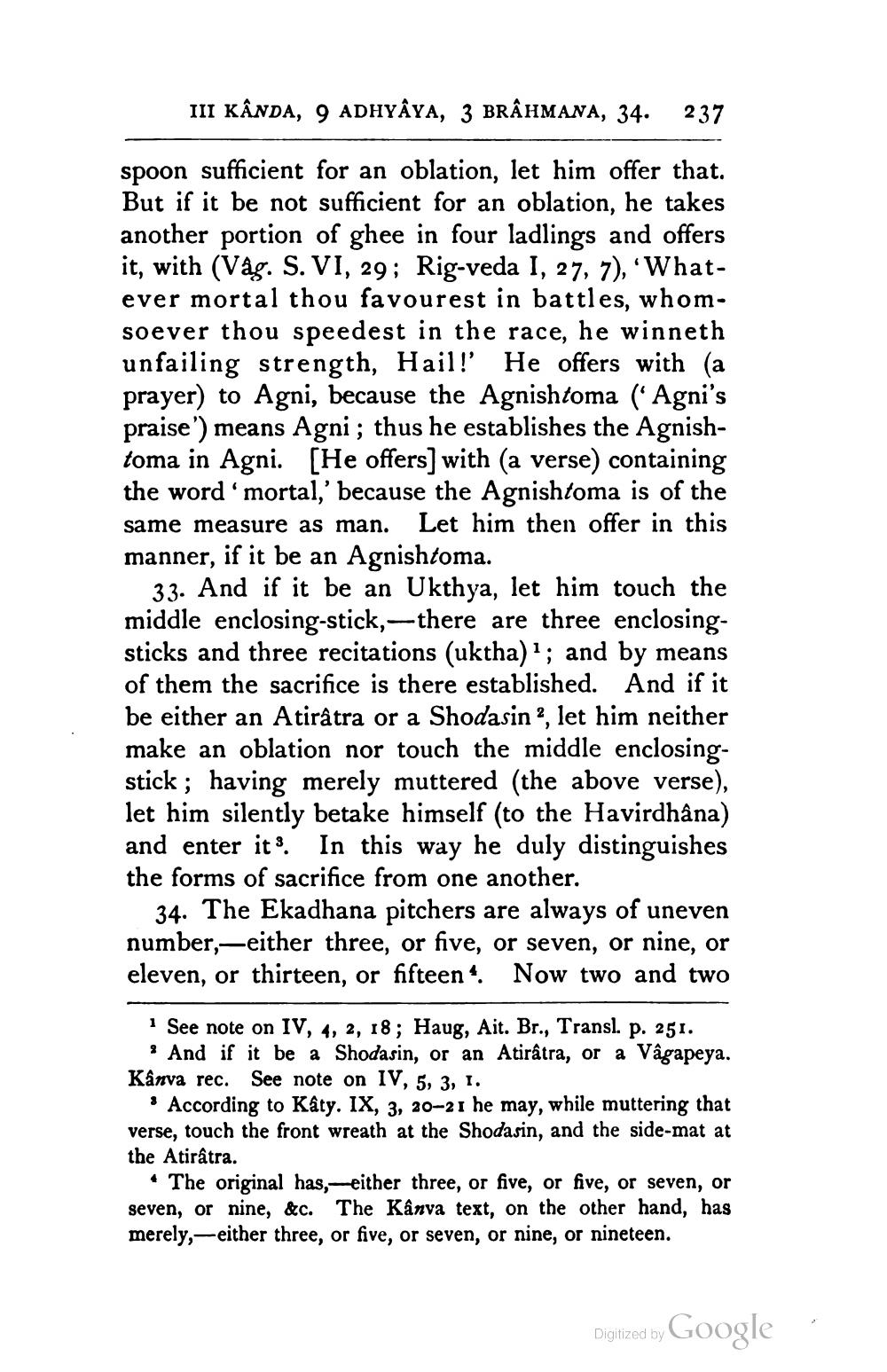________________
III KÂNDA, 9 ADHYAYA, 3 BRAHMANA, 34.
237
spoon sufficient for an oblation, let him offer that. But if it be not sufficient for an oblation, he takes another portion of ghee in four ladlings and offers it, with (Våg. S. VI, 29; Rig-veda I, 27, 7), 'Whatever mortal thou favourest in battles, whomsoever thou speedest in the race, he winneth unfailing strength, Hail!' He offers with a prayer) to Agni, because the Agnishtoma ( Agni's praise') means Agni ; thus he establishes the Agnishtoma in Agni. [He offers) with (a verse) containing the word 'mortal,' because the Agnishtoma is of the same measure as man. Let him then offer in this manner, if it be an Agnishtoma.
33. And if it be an Ukthya, let him touch the middle enclosing-stick,—there are three enclosingsticks and three recitations (uktha)?; and by means of them the sacrifice is there established. And if it be either an Atirâtra or a Shodasin ?, let him neither make an oblation nor touch the middle enclosingstick; having merely muttered (the above verse), let him silently betake himself (to the Havirdhana) and enter its. In this way he duly distinguishes the forms of sacrifice from one another.
34. The Ekadhana pitchers are always of uneven number,—either three, or five, or seven, or nine, or eleven, or thirteen, or fifteen“. Now two and two
See note on IV, 4, 2, 18; Haug, Ait. Br., Transl. p. 251. . And if it be a Shodasin, or an Atirâtra, or a Vâgapeya. Kanva rec. See note on IV, 5, 3, 1.
According to Kâty. IX, 3, 20-21 he may, while muttering that verse, touch the front wreath at the Shodasin, and the side-mat at the Atirâtra.
The original has, either three, or five, or five, or seven, or seven, or nine, &c. The Kânva text, on the other hand, has merely,- either three, or five, or seven, or nine, or nineteen.
Digitized by Google




